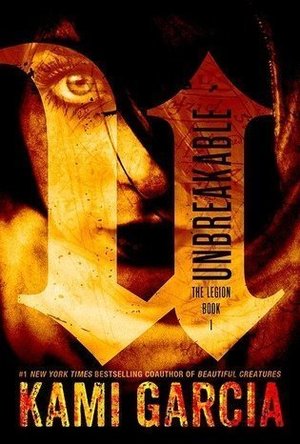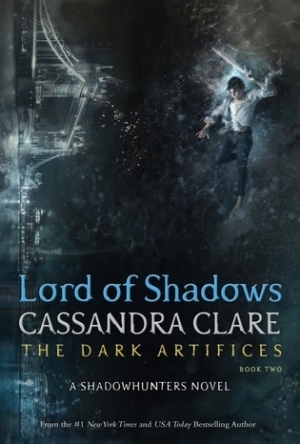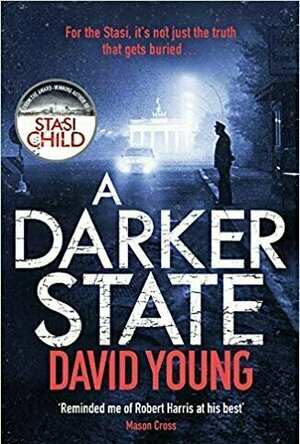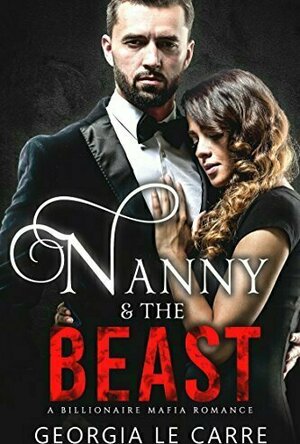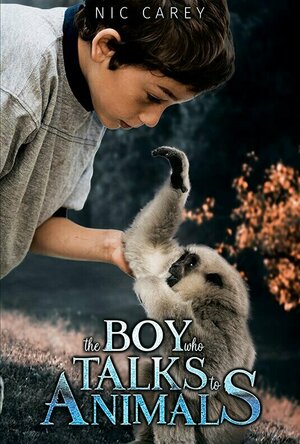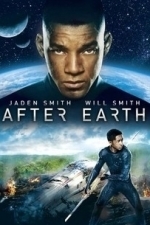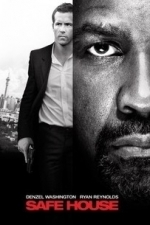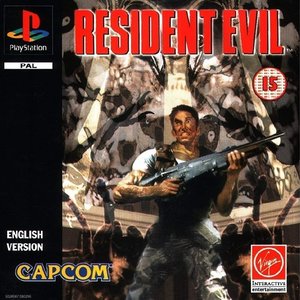Search
Search results
Sophia (Bookwyrming Thoughts) (530 KP) rated Unbreakable (The Legion, #1) in Books
Jan 23, 2020
Obviously choosing to dissect Kami Garcia's solo series as my next audiobook victim was a bad idea... a very bad idea...
Basically, I'm saying I give up on Kami Garcia. No offense, but after my horrid experience with the first couple of books of her <i>Beautiful Creatures</i> series she wrote with Margaret Stohl and then <i>Unbreakable</i>, I'm not sure I want to read another of her books (aside from maybe reading <i>Dangerous Creatures</i>).
<i>Unbreakable</i> sort of has a good idea – emphasis on sort of. Garcia's first debut solo novel follows Kennedy Waters, a girl who doesn't actually believe in ghosts until she finds her mother dead. Shortly after, a ghost makes an attempt to kill her as well, and is stopped by Lukas and Jared Lockhart, two brothers who are part of a centuries-old secret society made up of five members trying to stop a demon released by their ancestors hundreds of years ago. However, Kennedy isn't entirely too sure about whether or not she really belongs with this secret society called the Legion of the Black Dove.
For a person who doesn't watch <i>Supernatural</i> much, it's really weird when I get though, oh... 33 pages, that I realize a book is almost an exact carbon copy of the few episodes I watched.
For instance, there are two brothers in <i>Supernatural</i> and there are two brothers in <i>Unbreakable</i>. Are Sam and his brother identical? No.... not that I'm aware, which is only a small difference between the two books. Brother Pair 1 (<i>Supernatural</i>) and Brother Pair 2 (Unbreakable) apparently hunt demons for a living. At least, that's what I think Pair 1 did – correct me if I'm wrong, avid fans who are bound to be more accurate than me.
Oh, and there's a demon hunting around for a certain person... or a certain group of people. I'm pretty sure there was a demon hunting Brother Pair 1 for quite awhile in the episodes I actually watched (give me a break. I was bored. <i>Supernatural</i> just seemed interesting). Fun fact: possession involved in both TV show and book.
The mere fact that <i>Unbreakable</i> matched the few episodes (I believe they were reruns) I watched didn't bother me too much – it was a potential love triangle between Kennedy, Jared, and Lukas that eventually drove me up the wall. If Garcia isn't careful enough, the tension between Jared and Lukas could eventually set the book on fire – Lukas spends a good part of his time between fighting vengeful spirits and other things rubbing something that Jared did wrong in his face. It gets bad enough that both brothers reach the point of throttling each other's throats and Kennedy going between them and stopping them.
I felt like I was watching a scene from a <i>Twilight</i> (I'm starting to appreciate this series). <i>Lux</i> (because I totally snuck a few peeks in the third one), and pretty much any other book that has a love triangle in which 66% of them nearly start a brawl while the rest of the 33% pretty much yells, "STOP!"
By then, I was definitely not sticking around for five to go down to four just because of a mistake.
I did, however, like the world of Legion. It's certainly not a life I would want, but I definitely enjoyed the basic idea behind the series, Candice Accola's narration of <i>Unbreakable</i>, and the sound effects used in the audiobook.
<a href="https://bookwyrmingthoughts.com/dnf-audiobook-review-unbreakable-by-kami-garcia/"; target="_blank">This review was originally posted on Bookwyrming Thoughts</a>
Basically, I'm saying I give up on Kami Garcia. No offense, but after my horrid experience with the first couple of books of her <i>Beautiful Creatures</i> series she wrote with Margaret Stohl and then <i>Unbreakable</i>, I'm not sure I want to read another of her books (aside from maybe reading <i>Dangerous Creatures</i>).
<i>Unbreakable</i> sort of has a good idea – emphasis on sort of. Garcia's first debut solo novel follows Kennedy Waters, a girl who doesn't actually believe in ghosts until she finds her mother dead. Shortly after, a ghost makes an attempt to kill her as well, and is stopped by Lukas and Jared Lockhart, two brothers who are part of a centuries-old secret society made up of five members trying to stop a demon released by their ancestors hundreds of years ago. However, Kennedy isn't entirely too sure about whether or not she really belongs with this secret society called the Legion of the Black Dove.
For a person who doesn't watch <i>Supernatural</i> much, it's really weird when I get though, oh... 33 pages, that I realize a book is almost an exact carbon copy of the few episodes I watched.
For instance, there are two brothers in <i>Supernatural</i> and there are two brothers in <i>Unbreakable</i>. Are Sam and his brother identical? No.... not that I'm aware, which is only a small difference between the two books. Brother Pair 1 (<i>Supernatural</i>) and Brother Pair 2 (Unbreakable) apparently hunt demons for a living. At least, that's what I think Pair 1 did – correct me if I'm wrong, avid fans who are bound to be more accurate than me.
Oh, and there's a demon hunting around for a certain person... or a certain group of people. I'm pretty sure there was a demon hunting Brother Pair 1 for quite awhile in the episodes I actually watched (give me a break. I was bored. <i>Supernatural</i> just seemed interesting). Fun fact: possession involved in both TV show and book.
The mere fact that <i>Unbreakable</i> matched the few episodes (I believe they were reruns) I watched didn't bother me too much – it was a potential love triangle between Kennedy, Jared, and Lukas that eventually drove me up the wall. If Garcia isn't careful enough, the tension between Jared and Lukas could eventually set the book on fire – Lukas spends a good part of his time between fighting vengeful spirits and other things rubbing something that Jared did wrong in his face. It gets bad enough that both brothers reach the point of throttling each other's throats and Kennedy going between them and stopping them.
I felt like I was watching a scene from a <i>Twilight</i> (I'm starting to appreciate this series). <i>Lux</i> (because I totally snuck a few peeks in the third one), and pretty much any other book that has a love triangle in which 66% of them nearly start a brawl while the rest of the 33% pretty much yells, "STOP!"
By then, I was definitely not sticking around for five to go down to four just because of a mistake.
I did, however, like the world of Legion. It's certainly not a life I would want, but I definitely enjoyed the basic idea behind the series, Candice Accola's narration of <i>Unbreakable</i>, and the sound effects used in the audiobook.
<a href="https://bookwyrmingthoughts.com/dnf-audiobook-review-unbreakable-by-kami-garcia/"; target="_blank">This review was originally posted on Bookwyrming Thoughts</a>
Ivana A. | Diary of Difference (1171 KP) rated Lord Of Shadows in Books
Feb 3, 2020
<a href="https://diaryofdifference.com/">Blog</a>; | <a href="https://www.facebook.com/diaryofdifference/">Facebook</a>; | <a href="https://twitter.com/DiaryDifference">Twitter</a>; | <a href="https://www.instagram.com/diaryofdifference/">Instagram</a>; | <a href="https://www.pinterest.co.uk/diaryofdifference/pins/">Pinterest</a>;
<img src="https://i1.wp.com/diaryofdifference.com/wp-content/uploads/2019/07/Lord-of-Shadows-1.jpg?w=1920&ssl=1"/>;
I was lucky enough to be approached by LoveReading to review and join the blog tour for The Dark Artifices series by Cassandra Clare. Starting today, and posting every Wednesday, you will get to see what I thought about this series.
<b><i>Series: The Dark Artifices</i></b>
#1 <a href="https://www.goodreads.com/review/show/2843390110">Lady Midnight</a> - ★★★★
#2 <a href="https://www.goodreads.com/review/show/2865130437">Lord of Shadows</a> - ★★★★★
#3 <a href="https://www.goodreads.com/review/show/2865131320">Queen of Air and Darkness</a> - ★★★★★
<img src="https://i2.wp.com/diaryofdifference.com/wp-content/uploads/2019/06/Book-Review-Banner-5.png?ssl=1&w=510"/>;
Welcome back to the sequel of The Dark Artifices series. After reading the first book and getting to know all the new characters, the second book contained by far more detail and more adventures throughout.
The book starts where it left all, after the team defeats Malcolm, but now new dangers arise, as sea demons start summoning, and the Faeries, as usual, are planning some mischief.
Emma, as you might have guessed, is still my favourite. But, this time, we got to see more about the ”little children”, Kit, Ty and Livvy. As I kept reading and finding out more about them, I realised them I loved them more and more every single page.
I loved how Cassandra Clare managed to put differences aside, and teach us how it’s okay to be different and you will be accepted by the real friends in your life. While Ty is autistic and unique in his own way, he is accepted and loved by his family and friends, and his uniqueness makes him lovable character to all readers as well.
<b><i>We fear things because we value them. We fear losing people because we love them. We fear dying because we value being alive. Don’t wish you didn’t fear anything. All that would mean is that you didn’t feel anything. </i></b>
The best part of the book for me was everything that had to do with Faerie land. All the writing about how beautiful, but at the same time dangerous it is just made me want it more and more. So beautiful, and yet so cruel. A world where you get enchanted and then hurt, a world where time is irrelevant and beauty is forever.
Mark and Christina’s dance was one of the moments I will cherish forever in this book, and I don’t fall easily for romantic scenes.
Lord of Shadows was amazing, with so many adventures and different plots and character developments throughout. We have a lot of characters, and they all develop in their own way, and we get all their backgrounds and feelings, and actions that make them grow in a certain way, and each of these moments was precious to me in a different way, but all the same. We have Emma seeing her father (or an illusion of it) and having to kill him. Then there is her forbidden love to Julian. We have Kit, the lost Herondale and how he slowly fits into the academy. And most importantly, we have Magnus appearing in the book with Alec, and singing Spanish lullabies to his son.
So many amazing moments, too many bookmarks, and only one feeling of love towards everything Shadowhunter-y. I can’t wait to dive into the next book. Looking forward to it!
<img src="https://i1.wp.com/diaryofdifference.com/wp-content/uploads/2019/07/Lord-of-Shadows-1.jpg?w=1920&ssl=1"/>;
I was lucky enough to be approached by LoveReading to review and join the blog tour for The Dark Artifices series by Cassandra Clare. Starting today, and posting every Wednesday, you will get to see what I thought about this series.
<b><i>Series: The Dark Artifices</i></b>
#1 <a href="https://www.goodreads.com/review/show/2843390110">Lady Midnight</a> - ★★★★
#2 <a href="https://www.goodreads.com/review/show/2865130437">Lord of Shadows</a> - ★★★★★
#3 <a href="https://www.goodreads.com/review/show/2865131320">Queen of Air and Darkness</a> - ★★★★★
<img src="https://i2.wp.com/diaryofdifference.com/wp-content/uploads/2019/06/Book-Review-Banner-5.png?ssl=1&w=510"/>;
Welcome back to the sequel of The Dark Artifices series. After reading the first book and getting to know all the new characters, the second book contained by far more detail and more adventures throughout.
The book starts where it left all, after the team defeats Malcolm, but now new dangers arise, as sea demons start summoning, and the Faeries, as usual, are planning some mischief.
Emma, as you might have guessed, is still my favourite. But, this time, we got to see more about the ”little children”, Kit, Ty and Livvy. As I kept reading and finding out more about them, I realised them I loved them more and more every single page.
I loved how Cassandra Clare managed to put differences aside, and teach us how it’s okay to be different and you will be accepted by the real friends in your life. While Ty is autistic and unique in his own way, he is accepted and loved by his family and friends, and his uniqueness makes him lovable character to all readers as well.
<b><i>We fear things because we value them. We fear losing people because we love them. We fear dying because we value being alive. Don’t wish you didn’t fear anything. All that would mean is that you didn’t feel anything. </i></b>
The best part of the book for me was everything that had to do with Faerie land. All the writing about how beautiful, but at the same time dangerous it is just made me want it more and more. So beautiful, and yet so cruel. A world where you get enchanted and then hurt, a world where time is irrelevant and beauty is forever.
Mark and Christina’s dance was one of the moments I will cherish forever in this book, and I don’t fall easily for romantic scenes.
Lord of Shadows was amazing, with so many adventures and different plots and character developments throughout. We have a lot of characters, and they all develop in their own way, and we get all their backgrounds and feelings, and actions that make them grow in a certain way, and each of these moments was precious to me in a different way, but all the same. We have Emma seeing her father (or an illusion of it) and having to kill him. Then there is her forbidden love to Julian. We have Kit, the lost Herondale and how he slowly fits into the academy. And most importantly, we have Magnus appearing in the book with Alec, and singing Spanish lullabies to his son.
So many amazing moments, too many bookmarks, and only one feeling of love towards everything Shadowhunter-y. I can’t wait to dive into the next book. Looking forward to it!
Ivana A. | Diary of Difference (1171 KP) rated A Darker State (Karin Müller #3) in Books
Feb 3, 2020
<a href="https://amzn.to/2Wi7amb">Wishlist</a>; | <a
<a href="https://diaryofdifference.com/">Blog</a>; | <a href="https://www.facebook.com/diaryofdifference/">Facebook</a>; | <a href="https://twitter.com/DiaryDifference">Twitter</a>; | <a href="https://www.instagram.com/diaryofdifference/">Instagram</a>; | <a href="https://www.pinterest.co.uk/diaryofdifference/pins/">Pinterest</a>;
#1 <a href="https://www.goodreads.com/book/show/25708878-stasi-child">Stasi Child</a> - Not Read
#2 <a href="https://www.goodreads.com/book/show/32194597-stasi-wolf">Stasi Wolf</a> - Not Read
#3 <a href="https://www.goodreads.com/review/show/2384443604">A Darker State</a> - ★★
#4 <a href="https://www.goodreads.com/book/show/42408350-stasi-77">Stasi 77</a> - Not Read
#5 <a href="https://www.goodreads.com/book/show/47872602-stasi-winter">Stasi Winter</a> - Not Read
<img src="https://diaryofdifference.com/wp-content/uploads/2020/01/Book-Review-Banner-19-1024x576.png"/>;
<i>For the Stasi, it’s not just the truth that gets buried . . .
The body of a teenage boy is found weighted down in a lake. Karin Müller, newly appointed Major of the People’s Police, is called to investigate. But her power will only stretch so far, when every move she makes is under the watchful eye of the Stasi.
Then, when the son of Müller’s team member goes missing, it quickly becomes clear that there is a terrifying conspiracy at the heart of this case, one that could fast lead Müller and her young family into real danger.
Can she navigate this complex political web and find the missing boy, before it’s too late?</i>
<i><b>I have mixed feelings about A Darker State (Karin Müller #3).</b></i> It has been sitting on my shelf for a very long time, and when I finally managed to read it, I thought I would be in for a treat, for something special. But it wasn’t special. I did enjoy a bit of the mystery, but it is most certainly not a favourite of mine.
Apparently, this is the third book of a series, and the books can be read as standalone. The only thing they have in common is the character and how it develops throughout the books.
From the very beginning, the book came across as unrealistic. Karin has recently become a mother, and she is just getting back to her job, when suddenly, she is being promoted as the Major of the People’s Police and is put on a very dangerous case. Now I don’t know about your police forces, but ours would certainly not promote a person just like that.
<b><i>Karin’s character was too forced upon me.</i></b>
At least that is how I felt. Like I needed to like her, and I needed to respect her. And I just wasn’t having it. She was not really that good of a character. Maybe it’s because I missed on reading the previous two books and don’t know her well enough. And maybe she was just a poor creation.
I didn’t enjoy the political webs and plotting. I think I prefer a much more realistic, straight up mystery novel. There was a huge lack of mystery drama, suspense, excitement or fear, which I think was crucial for me rate this book low. There were only a few actual scenes where the scene was discussed and the causes of death, etc. I wish there were more scenes like this, rather than mysterious conversation with politicians and secretive tycoons.
I loved the author’s writing and description, but I don’t think his style fits my preference, so I don’t think I will be reading any more books from this series.
Let me know if you have read it. I would love to know what you think.
<a href="https://amzn.to/2Wi7amb">Wishlist</a>; | <a
<a href="https://diaryofdifference.com/">Blog</a>; | <a href="https://www.facebook.com/diaryofdifference/">Facebook</a>; | <a href="https://twitter.com/DiaryDifference">Twitter</a>; | <a href="https://www.instagram.com/diaryofdifference/">Instagram</a>; | <a href="https://www.pinterest.co.uk/diaryofdifference/pins/">Pinterest</a>;
<a href="https://diaryofdifference.com/">Blog</a>; | <a href="https://www.facebook.com/diaryofdifference/">Facebook</a>; | <a href="https://twitter.com/DiaryDifference">Twitter</a>; | <a href="https://www.instagram.com/diaryofdifference/">Instagram</a>; | <a href="https://www.pinterest.co.uk/diaryofdifference/pins/">Pinterest</a>;
#1 <a href="https://www.goodreads.com/book/show/25708878-stasi-child">Stasi Child</a> - Not Read
#2 <a href="https://www.goodreads.com/book/show/32194597-stasi-wolf">Stasi Wolf</a> - Not Read
#3 <a href="https://www.goodreads.com/review/show/2384443604">A Darker State</a> - ★★
#4 <a href="https://www.goodreads.com/book/show/42408350-stasi-77">Stasi 77</a> - Not Read
#5 <a href="https://www.goodreads.com/book/show/47872602-stasi-winter">Stasi Winter</a> - Not Read
<img src="https://diaryofdifference.com/wp-content/uploads/2020/01/Book-Review-Banner-19-1024x576.png"/>;
<i>For the Stasi, it’s not just the truth that gets buried . . .
The body of a teenage boy is found weighted down in a lake. Karin Müller, newly appointed Major of the People’s Police, is called to investigate. But her power will only stretch so far, when every move she makes is under the watchful eye of the Stasi.
Then, when the son of Müller’s team member goes missing, it quickly becomes clear that there is a terrifying conspiracy at the heart of this case, one that could fast lead Müller and her young family into real danger.
Can she navigate this complex political web and find the missing boy, before it’s too late?</i>
<i><b>I have mixed feelings about A Darker State (Karin Müller #3).</b></i> It has been sitting on my shelf for a very long time, and when I finally managed to read it, I thought I would be in for a treat, for something special. But it wasn’t special. I did enjoy a bit of the mystery, but it is most certainly not a favourite of mine.
Apparently, this is the third book of a series, and the books can be read as standalone. The only thing they have in common is the character and how it develops throughout the books.
From the very beginning, the book came across as unrealistic. Karin has recently become a mother, and she is just getting back to her job, when suddenly, she is being promoted as the Major of the People’s Police and is put on a very dangerous case. Now I don’t know about your police forces, but ours would certainly not promote a person just like that.
<b><i>Karin’s character was too forced upon me.</i></b>
At least that is how I felt. Like I needed to like her, and I needed to respect her. And I just wasn’t having it. She was not really that good of a character. Maybe it’s because I missed on reading the previous two books and don’t know her well enough. And maybe she was just a poor creation.
I didn’t enjoy the political webs and plotting. I think I prefer a much more realistic, straight up mystery novel. There was a huge lack of mystery drama, suspense, excitement or fear, which I think was crucial for me rate this book low. There were only a few actual scenes where the scene was discussed and the causes of death, etc. I wish there were more scenes like this, rather than mysterious conversation with politicians and secretive tycoons.
I loved the author’s writing and description, but I don’t think his style fits my preference, so I don’t think I will be reading any more books from this series.
Let me know if you have read it. I would love to know what you think.
<a href="https://amzn.to/2Wi7amb">Wishlist</a>; | <a
<a href="https://diaryofdifference.com/">Blog</a>; | <a href="https://www.facebook.com/diaryofdifference/">Facebook</a>; | <a href="https://twitter.com/DiaryDifference">Twitter</a>; | <a href="https://www.instagram.com/diaryofdifference/">Instagram</a>; | <a href="https://www.pinterest.co.uk/diaryofdifference/pins/">Pinterest</a>;
Ivana A. | Diary of Difference (1171 KP) rated Nanny and the Beast: A Billionaire Mafia Romance in Books
Feb 3, 2020
<a href="https://diaryofdifference.com/">Blog</a>; | <a href="https://www.facebook.com/diaryofdifference/">Facebook</a>; | <a href="https://twitter.com/DiaryDifference">Twitter</a>; | <a href="https://www.instagram.com/diaryofdifference/">Instagram</a>; | <a href="https://www.pinterest.co.uk/diaryofdifference/pins/">Pinterest</a>;
<img src="https://i2.wp.com/diaryofdifference.com/wp-content/uploads/2019/04/New-blog-banner-17.png?ssl=1"/>;
Let me explain, before you all judge me. I don’t usually read these types of books. Nanny and the Beast was just a book that was recommended to me. By my mum. And I loved it!
The book features April, who is a nanny by profession. She goes for an interview in a Russian billionaire’s house for the nanny position.
Yuri is a Russian billionaire who has a niece, Yulia, that hasn’t been speaking for a few months. When he sees April, he can’t resist her – which is why he doesn’t give her the job – it is too dangerous for her to stick around.
But when destiny takes matters in her own hands, and April end up being Yulia’s nanny, they have to find a way to leave their fierce erotic needs aside and focus on the little girl’s happiness.
<b>With lust and danger coming from all sides, they are not prepared to settle for little.</b>
I loved April. She is a kind girl and cared deeply about Yulia. She fears Yuri, but also can’t help but feel the attraction between them. She kept having second thoughts and getting ready to leave, and still stayed. She kept feeling humiliated, but remained to see if this love might work. April was also a very bad friend. I feel the need of mentioning this. While it was okay for her to call her friend any time, she always talked and never listened, even when her friend clearly wanted to talk. That is a no-no for me.
As for Yuri, I don’t think I liked him that much. Yes, I admired his possessiveness around April and how he cared about both April and Yulia. Everything about Yuri is so mysterious, so secret, and he is always on the edge. Which makes him wanted, I would assume. However, some of his actions and beliefs made me so angry I wanted to throw this book!
<b><i>The emotional scene that intrigued me.</i></b>
She was left by her mother as a child, because her mother didn’t have the money. While April grows up, her mother becomes very rich and famous. A secret part of Rachel hopes that her mother will come back for her. At one scene in the book, April and Yuri attend a dinner and April’s mother is there. When she sees her with Yuri, she whispers to April she is not good enough and tells her to stay off him, so her other daughter can be with him. And while the mother didn’t know April is her daughter, April did, and it hurt her badly.
Quite an emotional scene for April, realizing that her mother moved on, and has changed, and the reason she probably left her at the very beginning never had anything to do with her money.
I read this book in a day, so if you want a short hot steamy romance with a sexy Russian Alpha-male, you will definitely enjoy this. There are a few emotional roller coasters throughout the book. However, if you are looking for a deep book that will help you discover the meaning of life, I am sorry to disappoint you.
<b>Secret note: If you have in mind books similar to this, I am open to recommendations.</b>
<b><i>Trigger warnings: Explicit sexual scenes, violence, murder and psychological trauma.</i></b>
<a href="https://diaryofdifference.com/">Blog</a>; | <a href="https://www.facebook.com/diaryofdifference/">Facebook</a>; | <a href="https://twitter.com/DiaryDifference">Twitter</a>; | <a href="https://www.instagram.com/diaryofdifference/">Instagram</a>; | <a href="https://www.pinterest.co.uk/diaryofdifference/pins/">Pinterest</a>;
<img src="https://i2.wp.com/diaryofdifference.com/wp-content/uploads/2019/04/New-blog-banner-17.png?ssl=1"/>;
Let me explain, before you all judge me. I don’t usually read these types of books. Nanny and the Beast was just a book that was recommended to me. By my mum. And I loved it!
The book features April, who is a nanny by profession. She goes for an interview in a Russian billionaire’s house for the nanny position.
Yuri is a Russian billionaire who has a niece, Yulia, that hasn’t been speaking for a few months. When he sees April, he can’t resist her – which is why he doesn’t give her the job – it is too dangerous for her to stick around.
But when destiny takes matters in her own hands, and April end up being Yulia’s nanny, they have to find a way to leave their fierce erotic needs aside and focus on the little girl’s happiness.
<b>With lust and danger coming from all sides, they are not prepared to settle for little.</b>
I loved April. She is a kind girl and cared deeply about Yulia. She fears Yuri, but also can’t help but feel the attraction between them. She kept having second thoughts and getting ready to leave, and still stayed. She kept feeling humiliated, but remained to see if this love might work. April was also a very bad friend. I feel the need of mentioning this. While it was okay for her to call her friend any time, she always talked and never listened, even when her friend clearly wanted to talk. That is a no-no for me.
As for Yuri, I don’t think I liked him that much. Yes, I admired his possessiveness around April and how he cared about both April and Yulia. Everything about Yuri is so mysterious, so secret, and he is always on the edge. Which makes him wanted, I would assume. However, some of his actions and beliefs made me so angry I wanted to throw this book!
<b><i>The emotional scene that intrigued me.</i></b>
She was left by her mother as a child, because her mother didn’t have the money. While April grows up, her mother becomes very rich and famous. A secret part of Rachel hopes that her mother will come back for her. At one scene in the book, April and Yuri attend a dinner and April’s mother is there. When she sees her with Yuri, she whispers to April she is not good enough and tells her to stay off him, so her other daughter can be with him. And while the mother didn’t know April is her daughter, April did, and it hurt her badly.
Quite an emotional scene for April, realizing that her mother moved on, and has changed, and the reason she probably left her at the very beginning never had anything to do with her money.
I read this book in a day, so if you want a short hot steamy romance with a sexy Russian Alpha-male, you will definitely enjoy this. There are a few emotional roller coasters throughout the book. However, if you are looking for a deep book that will help you discover the meaning of life, I am sorry to disappoint you.
<b>Secret note: If you have in mind books similar to this, I am open to recommendations.</b>
<b><i>Trigger warnings: Explicit sexual scenes, violence, murder and psychological trauma.</i></b>
<a href="https://diaryofdifference.com/">Blog</a>; | <a href="https://www.facebook.com/diaryofdifference/">Facebook</a>; | <a href="https://twitter.com/DiaryDifference">Twitter</a>; | <a href="https://www.instagram.com/diaryofdifference/">Instagram</a>; | <a href="https://www.pinterest.co.uk/diaryofdifference/pins/">Pinterest</a>;
Night Reader Reviews (683 KP) rated The Boy Who Talks to Animals in Books
Feb 29, 2020
Honest Review for Free Copy of Book
The Boy Who Talks To Animals by Nic Carey is a hard book to describe. The best way I can come up with is to offer a quote from the book:
“Where does legend end and reality begin? Perhaps all reality has root in legend and the two are intertwined.” - Professor Lofthouse page 140
Ben has worked at the zoo for years and had always wanted to be a zookeeper ever since he was a child. He loves animals and has dedicated his life to their care and happiness. Sometimes this means going into work super early and at times staying all night long. One night he started to notice strange things happening at the zoo restaurant, making him believe someone is breaking in and getting into the food. Concerned about the security of the zoo and the safety of not only the animals but also for the person breaking in, Ben sets a trap and waits to see who it is.
Much to Ben’s surprise, the culprit is a young boy about twelve years old. This boy appears to be a runaway and has been getting his food from the zoo for quite a while now. Slowly Ben befriends the boy and discovers something odd and wondrous about him. While this boy either can’t or won’t talk to people, he can talk to animals. All the animals in the zoo love this boy, even the most dangerous ones consider him to be one of their own. The people that spend a lot of time around the boy also start to notice some changes within themselves. Now all Be can hope for is that the zoo can offer this special boy the shelter, protection, love, and life that he deserves.
What I liked best was the Professor's description of hidden skills and his explanation of Autism was one of the best I have ever heard. He suggests that our ancestors had abilities like the boy in the story but since we lost our connection with the planet we lost those abilities. At times that extra chromosome shows up, giving a person access to these ancient abilities, but they must give up something else such as the ability to speak in order to access it. Honestly, my biggest problem occurs before the book actually starts. There is a four-page synopsis at the beginning of the book. While a synopsis in itself is not a problem this one was so long and detailed that after reading it I lost interest in reading the book. This was because the synopsis contains major spoilers and tells the reader how the book ends. I highly recommend if anyone decides to read this book that you do not read the synopsis.
Content-wise this book is safe for just about anyone to read. Aside from kissing the only thing that could be classified as inappropriate is a primate grabbing at a woman’s butt in one short area. The book is a bit long which may discourage some younger readers. I rate this book 2 out of 4. The story itself is really good but the delivery isn’t all that great. Besides the synopsis (which ruined the book for me) inside the book which tells everything of importance that happens. Also, the book drags, nothing really happens until the last few chapters and the first half of the book is really slow to progress.
https://www.facebook.com/nightreaderreviews/
https://smashbomb.com/nightreader
https://nightreaderreviews.blogspot.com/
“Where does legend end and reality begin? Perhaps all reality has root in legend and the two are intertwined.” - Professor Lofthouse page 140
Ben has worked at the zoo for years and had always wanted to be a zookeeper ever since he was a child. He loves animals and has dedicated his life to their care and happiness. Sometimes this means going into work super early and at times staying all night long. One night he started to notice strange things happening at the zoo restaurant, making him believe someone is breaking in and getting into the food. Concerned about the security of the zoo and the safety of not only the animals but also for the person breaking in, Ben sets a trap and waits to see who it is.
Much to Ben’s surprise, the culprit is a young boy about twelve years old. This boy appears to be a runaway and has been getting his food from the zoo for quite a while now. Slowly Ben befriends the boy and discovers something odd and wondrous about him. While this boy either can’t or won’t talk to people, he can talk to animals. All the animals in the zoo love this boy, even the most dangerous ones consider him to be one of their own. The people that spend a lot of time around the boy also start to notice some changes within themselves. Now all Be can hope for is that the zoo can offer this special boy the shelter, protection, love, and life that he deserves.
What I liked best was the Professor's description of hidden skills and his explanation of Autism was one of the best I have ever heard. He suggests that our ancestors had abilities like the boy in the story but since we lost our connection with the planet we lost those abilities. At times that extra chromosome shows up, giving a person access to these ancient abilities, but they must give up something else such as the ability to speak in order to access it. Honestly, my biggest problem occurs before the book actually starts. There is a four-page synopsis at the beginning of the book. While a synopsis in itself is not a problem this one was so long and detailed that after reading it I lost interest in reading the book. This was because the synopsis contains major spoilers and tells the reader how the book ends. I highly recommend if anyone decides to read this book that you do not read the synopsis.
Content-wise this book is safe for just about anyone to read. Aside from kissing the only thing that could be classified as inappropriate is a primate grabbing at a woman’s butt in one short area. The book is a bit long which may discourage some younger readers. I rate this book 2 out of 4. The story itself is really good but the delivery isn’t all that great. Besides the synopsis (which ruined the book for me) inside the book which tells everything of importance that happens. Also, the book drags, nothing really happens until the last few chapters and the first half of the book is really slow to progress.
https://www.facebook.com/nightreaderreviews/
https://smashbomb.com/nightreader
https://nightreaderreviews.blogspot.com/
Gareth von Kallenbach (980 KP) rated After Earth (2013) in Movies
Aug 7, 2019
At its core, After Earth is a coming of age story set in a future sci-fi world. With the story by Will Smith and directed by M Knight Shyamalan, those expecting the summer blockbusters that Will Smith is known for may be disappointed. Furthermore, those expecting an epic sci-fi film will also be disappointed. In many ways After Earth is a coming of age film for Jaden Smith, who takes center stage.
Set 1000 years in the future, mankind is fighting for survival against a race of creatures known as Ursa, who hunt humans down by smelling fear. The human Special Forces are led by General Cypher Raige played by Will Smith. Smith is a legendary ranger and revered among mankind because of his ability to “Ghost” which is to suppress his fear completely so the Ursa cannot sense him. Meanwhile his son Kitai, played by Will Smith’s real life son Jaden Smith, is desperately trying to impress his father by following in his footsteps. Kitai’s real test comes when the two crash land on the abandoned Earth and Kitai must face his crippling internal fear to save himself and his father.
Will Smith plays perhaps one of his most subdued roles of his career. No wise cracks, no bravado. He is very much the stern and stoic military man. As if to showcase his ability to completely control his fear his character also shows no other emotion either. This is a risky play for an actor who is known for his charisma. And without a doubt many will be turned off by it. But it works to help elevate Jaden’s performance, especially since Will speaks most of the dialog in the film by giving stern orders not only as commanding officer but as a father to son.
Jaden Smith’s performance starts out mediocre. He is not the over confident stupid youth you would mostly expect to find in this type of role, but rather he is the unassuming, emotional and somewhat weak character. From the time the characters crash land on earth he becomes the lead. At first his character is somewhat annoying as he is crippled by fear and emotions. But at the point when he starts to conquer those fears, we too get carried by his performance. He becomes stronger and I found myself actually involved in his journey. No longer trying to figure out what new obstacle he must face next, but rather in watching him grow from boy to man.
Visually the film is beautiful and refreshing. The sci-fi aspects of the film are unassuming which helps to not take away from the story being told. It was reminiscent of some of the 80s sci-fi films that were futuristic but limited and instead focused on story. The first act of the film is slow, however once the scene shifts to earth, the pacing of this film is excellent. It is one dangerous thing to the next in a race against time.
In the end I found myself enjoying this film more than I thought I would. I was surprised by Will Smith’s limited role but I was pleasantly surprised by Jaden’s growth on screen. The film had less visual sci-fi then I was expecting however in the end I did not seem to mind as I found myself more interested in the coming of age story. It is far from perfect and does not feel right being released during the summer blockbuster season. However in the end, it is worth a trip to the theater, even if it is only a matinee.
Set 1000 years in the future, mankind is fighting for survival against a race of creatures known as Ursa, who hunt humans down by smelling fear. The human Special Forces are led by General Cypher Raige played by Will Smith. Smith is a legendary ranger and revered among mankind because of his ability to “Ghost” which is to suppress his fear completely so the Ursa cannot sense him. Meanwhile his son Kitai, played by Will Smith’s real life son Jaden Smith, is desperately trying to impress his father by following in his footsteps. Kitai’s real test comes when the two crash land on the abandoned Earth and Kitai must face his crippling internal fear to save himself and his father.
Will Smith plays perhaps one of his most subdued roles of his career. No wise cracks, no bravado. He is very much the stern and stoic military man. As if to showcase his ability to completely control his fear his character also shows no other emotion either. This is a risky play for an actor who is known for his charisma. And without a doubt many will be turned off by it. But it works to help elevate Jaden’s performance, especially since Will speaks most of the dialog in the film by giving stern orders not only as commanding officer but as a father to son.
Jaden Smith’s performance starts out mediocre. He is not the over confident stupid youth you would mostly expect to find in this type of role, but rather he is the unassuming, emotional and somewhat weak character. From the time the characters crash land on earth he becomes the lead. At first his character is somewhat annoying as he is crippled by fear and emotions. But at the point when he starts to conquer those fears, we too get carried by his performance. He becomes stronger and I found myself actually involved in his journey. No longer trying to figure out what new obstacle he must face next, but rather in watching him grow from boy to man.
Visually the film is beautiful and refreshing. The sci-fi aspects of the film are unassuming which helps to not take away from the story being told. It was reminiscent of some of the 80s sci-fi films that were futuristic but limited and instead focused on story. The first act of the film is slow, however once the scene shifts to earth, the pacing of this film is excellent. It is one dangerous thing to the next in a race against time.
In the end I found myself enjoying this film more than I thought I would. I was surprised by Will Smith’s limited role but I was pleasantly surprised by Jaden’s growth on screen. The film had less visual sci-fi then I was expecting however in the end I did not seem to mind as I found myself more interested in the coming of age story. It is far from perfect and does not feel right being released during the summer blockbuster season. However in the end, it is worth a trip to the theater, even if it is only a matinee.
Gareth von Kallenbach (980 KP) rated Safe House (2012) in Movies
Aug 7, 2019
In a complicated deadly game of international espionage things are rarely what they appear to be. Take the case of Matt Weston (Ryan Reynolds), a young man who, for all intents and purposes, appears to divide his time between his adoring French girlfriend (Nora Arnezeder) and a South African hospital. But if one were to pull back the curtain they would learn that Matt is actually a CIA agent who spends his time watching over a safe house, an assignment of painfully tedious monotony.
In the new action thriller “Safe House”, Reynolds eschews his typical charming, cocky, wisecracking on-screen personas to portray Matt as a mature young man with ambitions both inside and outside of his job. Matt longs to be assigned to a more glamorous position and is hopeful that when his 12 month tour in South Africa is up, a more exciting post awaits him in Paris. It doesn’t hurt that a Paris post will also allow him to be closer to his girlfriend when she returns to Europe in the near future. But his boss David Barlow (Brendan Gleason) isn’t as optimistic.
As his frustrations at the lack of mobility grows, Matt soon finds his quiet world torn asunder by the arrival of Tobin Frost (Denzel Washington). Frost is a former agent who went rogue and is considered an extremely dangerous and high-profile target. Having eluded the CIA for years, he only draws even more suspicion when he surrenders himself to a US consulate in South Africa. The CIA knows they have to act fast to determine what Frost knows, and quickly whisk him away to a safe house for intense interrogation. But the CIA aren’t the only ones who want to know Tobin’s secrets.
Although Matt is highly trained for his job running the safe house, he is very green when it comes to the reality of having to defend his domain against a surprise attack which leaves Tobin and Matt as the only survivors. Forced to flee and with nowhere to turn, Frost tries to convince Matt that they have been set up because someone in the agency does not want Frost to talk. At first skeptical, Matt is forced to step outside of his comfort zones and confront a deadly array of assassins as well as the threat posed by Frost himself and the unseen elements working against them. In a frantic race, Matt must keep Frost and himself alive as they attempt to reach safety and get to the truth behind the deadly game in which they’ve been cast.
Washington and Reynolds worked very well together and had a very natural, unforced chemistry. It was very nice to see Reynolds take on a grittier and more intense role than we have seen from him previously. Washington is a true artist at playing taciturn and wiley, and no one else can portray the pain and shock of being shot as subtly or as convincingly as Washington with just a simple change of expression.
That being said, the film had a number of issues. First and foremost, plot holes that you could drive a truck through and gaps in logic that really require the audience to take some serious leaps of faith. While there was some intense action, it was difficult to appreciate when it looked like the camera was being kicked around the floor during fight scenes, giving the film a very jerky quality. The film also suffered from some pacing issues with parts of the movie dragging as it worked toward an extremely predictable conclusion, one that I figured out very early into the film. There is some fine supporting work in the movie, particularly that of Gleeson and Arnezeder, as well as Ruben Blades as an old cohort of Frost’s, but it is not enough to help the film live up to its intriguing premise.
In the new action thriller “Safe House”, Reynolds eschews his typical charming, cocky, wisecracking on-screen personas to portray Matt as a mature young man with ambitions both inside and outside of his job. Matt longs to be assigned to a more glamorous position and is hopeful that when his 12 month tour in South Africa is up, a more exciting post awaits him in Paris. It doesn’t hurt that a Paris post will also allow him to be closer to his girlfriend when she returns to Europe in the near future. But his boss David Barlow (Brendan Gleason) isn’t as optimistic.
As his frustrations at the lack of mobility grows, Matt soon finds his quiet world torn asunder by the arrival of Tobin Frost (Denzel Washington). Frost is a former agent who went rogue and is considered an extremely dangerous and high-profile target. Having eluded the CIA for years, he only draws even more suspicion when he surrenders himself to a US consulate in South Africa. The CIA knows they have to act fast to determine what Frost knows, and quickly whisk him away to a safe house for intense interrogation. But the CIA aren’t the only ones who want to know Tobin’s secrets.
Although Matt is highly trained for his job running the safe house, he is very green when it comes to the reality of having to defend his domain against a surprise attack which leaves Tobin and Matt as the only survivors. Forced to flee and with nowhere to turn, Frost tries to convince Matt that they have been set up because someone in the agency does not want Frost to talk. At first skeptical, Matt is forced to step outside of his comfort zones and confront a deadly array of assassins as well as the threat posed by Frost himself and the unseen elements working against them. In a frantic race, Matt must keep Frost and himself alive as they attempt to reach safety and get to the truth behind the deadly game in which they’ve been cast.
Washington and Reynolds worked very well together and had a very natural, unforced chemistry. It was very nice to see Reynolds take on a grittier and more intense role than we have seen from him previously. Washington is a true artist at playing taciturn and wiley, and no one else can portray the pain and shock of being shot as subtly or as convincingly as Washington with just a simple change of expression.
That being said, the film had a number of issues. First and foremost, plot holes that you could drive a truck through and gaps in logic that really require the audience to take some serious leaps of faith. While there was some intense action, it was difficult to appreciate when it looked like the camera was being kicked around the floor during fight scenes, giving the film a very jerky quality. The film also suffered from some pacing issues with parts of the movie dragging as it worked toward an extremely predictable conclusion, one that I figured out very early into the film. There is some fine supporting work in the movie, particularly that of Gleeson and Arnezeder, as well as Ruben Blades as an old cohort of Frost’s, but it is not enough to help the film live up to its intriguing premise.

Samurai: Way of the Warrior HD
Games and Entertainment
App
☞ SAMURAI II: Vengeance is coming on 21st October ☜ ★ "Samurai is absolutely gorgeous. Not...
Matthew Krueger (10051 KP) rated the PlayStation version of Resident Evil in Video Games
Jun 27, 2020 (Updated Jun 27, 2020)
The Atmosphere (2 more)
The Horror
The depending on what you need or think that's important.
The Infested Mansion
Resident Evil- like Silent Hill, the atmosphere of a the horror genre is excellent. Resident Evil ask you the question, if you and your team got stranded and the only place to go is a old creepy manison and survive it, can you do it?. The answer for me, no! But for Chris and Jill their have to, no other choice. Thats what i love about Resident Evil, is the atmosphere of the manison, the creepest, the mystery, the suspense, the thrills and the creatures that live inside of it.
The plot: Chris Redfield and Jill Valentine, are members of an elite task force known as S.T.A.R.S., as they investigate the outskirts of Raccoon City following the disappearance of their team members. They soon become trapped in a mansion infested with zombies and other monsters. The player, having selected to play as Chris or Jill at the start of the game, must explore the mansion to uncover its secrets.
Gameplay: The player's character is a member of a special law enforcement task force who is trapped in a mansion populated by dangerous mutated creatures. The objective of the game is to uncover the mystery of the mansion and ultimately escape alive.
To fulfill the game's objective, the player uncovers various documents that provide exposition about the game's narrative, as well as clues that help them solve various puzzles within the mansion. Key items are also available that give the player access to other items or new areas. The player can arm their character with weapons to defend themselves from enemies, although the ammunition available for each firearm is limited and the player must learn to conserve the ammunition they have for situations where they will really need it
The carrying capacity of the player is limited depending on the character and items that the player does not wish to carry at the moment can be stored into an item box to be retrieved for later use. To save their progress, the player must pick up an ink ribbon and use it on any of the typewriters scattered through key locations in the game. However, the supply of ink ribbons the player can acquire is limited much like the player's ammo and healing supplies. Players will encounter and fight various infected creatures as flesh-eating zombies, undead dogs, giant spiders, and other monsters.
Resident Evil was very well received critically and commercially, and is often credited for defining the survival horror genre. Beyond video games, Resident Evil has been credited with re-popularising zombies in mainstream popular culture from the late 1990s onwards (along with The House of the Dead), leading to a renewed interest in zombie films during the 2000s. Resident Evil has since been hailed as one of the most influential and greatest video games of all time. Its success has spawned a multimedia franchise including video games, films, comics, novels, and other merchandise. The game has received dedicated ports to the Sega Saturn, Windows, and Nintendo DS. In 2002, a remake of the same name was released for the GameCube featuring updated graphics, sound, and changes to the gameplay and story. A high-definition remaster of the GameCube game was released in 2015 for modern platforms.
Resident Evil- is one of my favorite survivor horror games of all time and one of my favorite games of all times. Its intense, thrilling, suspenseful and overall scary. Resident Evil is a must to play, if you haven't already. Will you survivie the manison or not!
The plot: Chris Redfield and Jill Valentine, are members of an elite task force known as S.T.A.R.S., as they investigate the outskirts of Raccoon City following the disappearance of their team members. They soon become trapped in a mansion infested with zombies and other monsters. The player, having selected to play as Chris or Jill at the start of the game, must explore the mansion to uncover its secrets.
Gameplay: The player's character is a member of a special law enforcement task force who is trapped in a mansion populated by dangerous mutated creatures. The objective of the game is to uncover the mystery of the mansion and ultimately escape alive.
To fulfill the game's objective, the player uncovers various documents that provide exposition about the game's narrative, as well as clues that help them solve various puzzles within the mansion. Key items are also available that give the player access to other items or new areas. The player can arm their character with weapons to defend themselves from enemies, although the ammunition available for each firearm is limited and the player must learn to conserve the ammunition they have for situations where they will really need it
The carrying capacity of the player is limited depending on the character and items that the player does not wish to carry at the moment can be stored into an item box to be retrieved for later use. To save their progress, the player must pick up an ink ribbon and use it on any of the typewriters scattered through key locations in the game. However, the supply of ink ribbons the player can acquire is limited much like the player's ammo and healing supplies. Players will encounter and fight various infected creatures as flesh-eating zombies, undead dogs, giant spiders, and other monsters.
Resident Evil was very well received critically and commercially, and is often credited for defining the survival horror genre. Beyond video games, Resident Evil has been credited with re-popularising zombies in mainstream popular culture from the late 1990s onwards (along with The House of the Dead), leading to a renewed interest in zombie films during the 2000s. Resident Evil has since been hailed as one of the most influential and greatest video games of all time. Its success has spawned a multimedia franchise including video games, films, comics, novels, and other merchandise. The game has received dedicated ports to the Sega Saturn, Windows, and Nintendo DS. In 2002, a remake of the same name was released for the GameCube featuring updated graphics, sound, and changes to the gameplay and story. A high-definition remaster of the GameCube game was released in 2015 for modern platforms.
Resident Evil- is one of my favorite survivor horror games of all time and one of my favorite games of all times. Its intense, thrilling, suspenseful and overall scary. Resident Evil is a must to play, if you haven't already. Will you survivie the manison or not!

Interstate: Express Highway Politics, 1939-2009
Book
This new, expanded edition brings the story of the Interstates into the twenty-first century. It...
